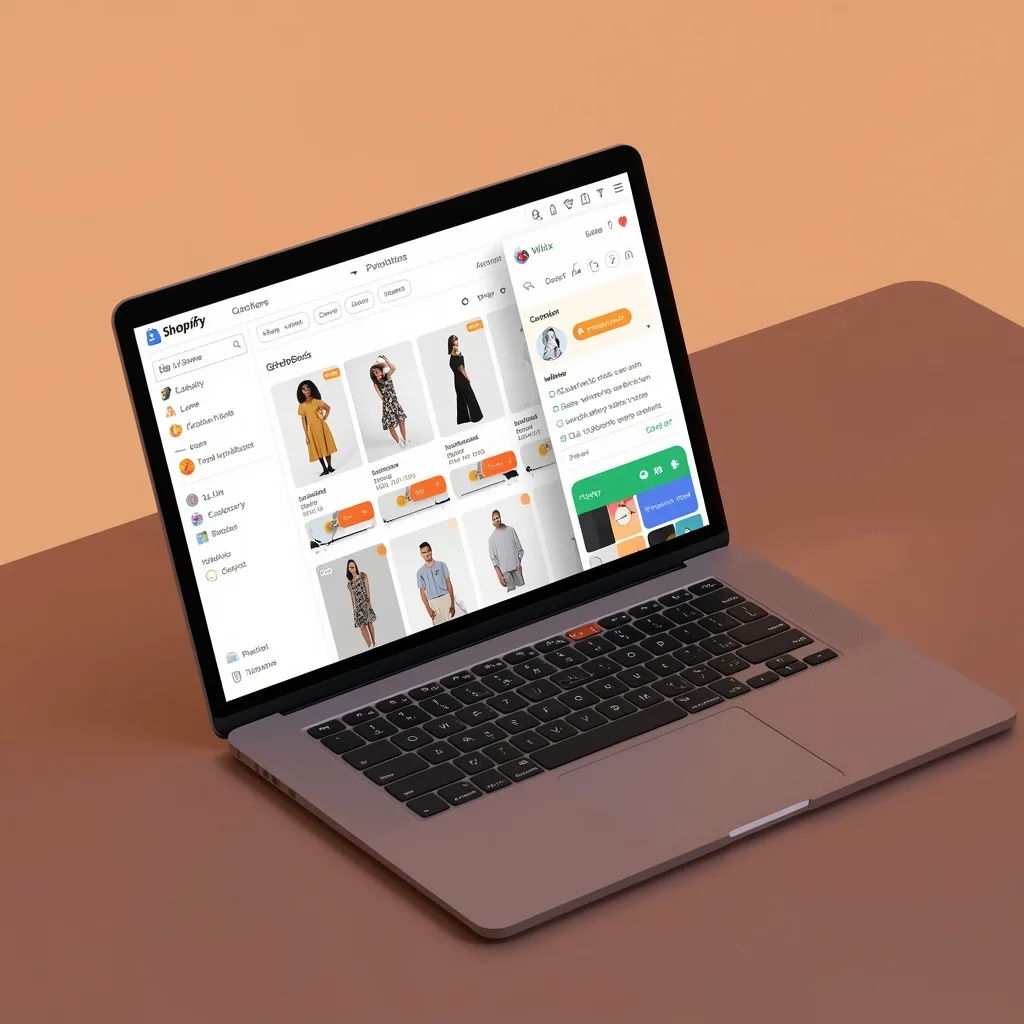TL:DR
Your website is the digital home base for your business — and choosing the best website platform for small businesses can make all the difference in how effectively it attracts and converts customers. In this guide, we’ll cover:
How to choose the best website platforms for small businesses
Must-have features that turn visitors into paying clients
Common mistakes that hold small business websites back
How to make your site work for you with SEO and automation
Whether you’re designing it yourself or hiring a professional, this guide will help you create a website that not only looks great — but also drives results.
Why Your Website Matters More Than Ever
Your website is often the first place a potential customer will interact with your brand. Within seconds, they’ll decide whether to keep exploring or click away, and that decision is shaped by your site’s design, functionality, and clarity.
Here’s why your website is one of your most valuable marketing tools:
First impressions count. A professional, well-structured website builds trust instantly.
It works 24/7. Even while you’re off the clock, your website can capture leads, answer questions, and book appointments.
It fuels all other marketing. Social media, email campaigns, and ads all point back to your website; if it’s weak, your marketing ROI drops.
It’s your space. Unlike social platforms, you fully own your website and control how it looks, feels, and functions.
In short, your website isn’t just a “check-the-box” item; it’s a living, breathing part of your business that should actively work to bring you more leads and clients.
The 6 Most Popular Website Platforms for Small Businesses
Choosing the right website platform is one of the most important decisions you’ll make for your online presence. Each platform has its strengths and weaknesses, so the right choice depends on your goals, budget, and how hands-on you want to be. Now, let’s break down the pros and cons of each contender for the best website platform for small businesses, so you can choose one that fits your needs and goals.
1. WordPress
Best for: Businesses that want complete control, flexibility, and scalability. If you’re looking for the most flexible and scalable option, WordPress often earns the title of the best website platform for small businesses that plan to grow.
Pros:
Endless customization with thousands of themes and plugins
Excellent for SEO when set up correctly
Works for everything from simple brochure sites to large e-commerce stores
You own and control your site entirely
Cons:
Steeper learning curve for beginners
Requires ongoing maintenance and security updates
Pricing Snapshot: Free core software, but hosting typically starts at $5–$25/month. Premium themes or plugins may add extra cost.
SEO & Customization Notes: WordPress is the most SEO-friendly platform when paired with the right tools (e.g., Rank Math or Yoast SEO). Perfect for content-heavy sites or businesses that plan to scale.
Pricing Snapshot: Free core software, but hosting typically starts at $5–$25/month. Premium themes or plugins may add extra cost.
My Take:
WordPress is my go-to platform for most small business websites because it’s the most SEO-friendly and adaptable over time. When I build your site, I include free, fast hosting, so you get all the benefits without the typical ongoing hosting bill.

2. Squarespace
Best for: Creative professionals, service providers, and businesses that want beautiful design without coding.
Pros:
- All-in-one platform with hosting included
- Sleek, modern templates that look great out of the box
- Easy-to-use drag-and-drop builder
- Strong built-in blogging features
Cons:
- Limited customization compared to WordPress
- Templates can feel restrictive — if you want full creative freedom, you may hit design limitations quickly
- Fewer third-party integrations than other platforms
Pricing Snapshot: $16–$49/month (includes hosting and templates)
My Take:
Squarespace is great if you want a stylish site with minimal setup, but if you have a specific vision or expect your site to grow in complexity over time, the platform’s limitations might feel frustrating. Many small businesses start here for simplicity, but later move to something more flexible once their needs expand.

3. Wix
Best for: Small businesses that want a simple, affordable way to get online quickly.
Pros:
- Extremely user-friendly drag-and-drop editor
- Hundreds of templates for different industries
- App market for adding features like bookings or chat
Cons:
Less control over mobile optimization
Can feel limiting if your site needs advanced customization later
Migrating to another platform down the road can be time-consuming
Pricing Snapshot: $16–$45/month depending on plan
My Take:
Wix is great for getting a site live quickly with minimal tech skills, and it’s one of the easiest platforms for beginners to learn. That said, if your business grows or you need complex features, you might outgrow it and need a full redesign on a more advanced platform.

4. Shopify
Best for: Businesses that are primarily selling products online and want a platform built for e-commerce from the ground up.
Pros:
Designed specifically for selling products online
User-friendly interface with powerful inventory management
Secure and fast checkout experience
Huge app store for extending functionality
Cons:
Monthly fees plus transaction fees (unless using Shopify Payments)
Limited customization outside of templates unless you use code
Not ideal for service-based businesses without a product focus
Pricing Snapshot: $39–$399/month depending on features
My Take:
I love Shopify for businesses with a true e-commerce focus and a decent-sized product catalog. It’s built to handle online sales efficiently and gives you the tools you need to grow. If you’re selling just a few products, it may be more than you need — but for full-scale online stores, it’s hard to beat. When e-commerce is your focus, Shopify is often considered the best website platform for small businesses selling physical or digital products.

5. Showit
Best for: Creative businesses, photographers, and designers who want full visual control over their website.
Pros:
Total creative freedom — you can customize every part of your site, from layouts to buttons
Large library of beautifully designed templates
Easy drag-and-drop interface for visually building pages
Integrates with WordPress for blogging
Cons:
Because you design every element, it can be time-consuming to build
Without a good understanding of web design basics, it’s easy to create a site that feels unorganized or inconsistent
Not as straightforward for scaling to complex features like e-commerce
Pricing Snapshot: $19–$34/month, plus additional costs if integrating with WordPress for blogging
My Take:
Showit is amazing for visually creative brands that want a completely unique look and aren’t afraid to get hands-on with the design process. But the same flexibility that makes it fun can also make it overwhelming — especially if you don’t have an eye for layout and usability.

Wrapping Up: Choosing the Right Website Platform
All of the platforms above can work beautifully for small businesses. Ultimately, the best website platform for small businesses is the one you’ll actually use and maintain. The most important factors aren’t just the features each platform offers, but whether you enjoy working on it (if you’ll be making updates yourself) or if you have a web designer you trust to handle it for you. A good platform paired with a great working relationship can make all the difference in how your website performs over time.
Final Thoughts: Picking the Best Website Platform for Your Small Business
The truth is, there’s no single “best” website platform for every small business — it comes down to your goals, your comfort level with technology, and the kind of support you have. Whether you’re drawn to the endless flexibility of WordPress, the simplicity of Squarespace, the creative freedom of Showit, the quick-launch nature of Wix, or the powerful e-commerce tools in Shopify, each option can help you build a beautiful and functional website.
If you’re unsure which direction to take, start by listing your must-have features, your budget, and how hands-on you want to be with your site. From there, you can choose the platform that not only meets your current needs but can grow with you over time.
And remember — the best website isn’t just about the platform. It’s about having a clear strategy, solid design, and the right tools in place to attract visitors and turn them into customers.




